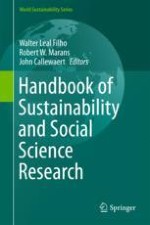2018 | OriginalPaper | Chapter
Organizational Characteristics in Residential Rental Buildings: Exploring the Role of Centralization in Energy Outcomes
Author : Elizabeth Hewitt
Published in: Handbook of Sustainability and Social Science Research
Publisher: Springer International Publishing
Activate our intelligent search to find suitable subject content or patents.
Select sections of text to find matching patents with Artificial Intelligence. powered by
Select sections of text to find additional relevant content using AI-assisted search. powered by
